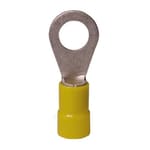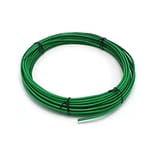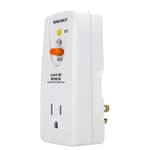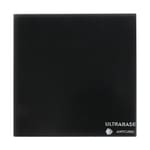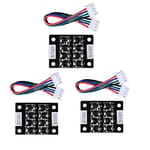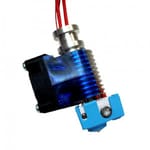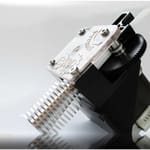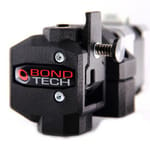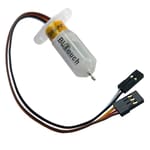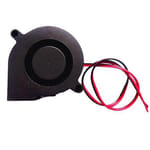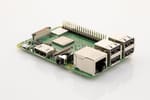As the waves of new 3D printer kits ebb and flow, at any given time there are always a small handful of names that dominate — names often repeated on likes of 3D printing focused Reddit and YouTube communities. The Tevo Tornado is one such 3D printer, and love it or hate it, it’s been on an upward trend since launching in the summer of 2017.
For many, the Tevo Tornado provides adequate performance out of the box. A desirable trait for 3D printer with a large print bed and a competitive price point.
In fact, some would say that the stock print quality is perfectly acceptable even. But what can be done to make it better?
Well, here’s the answer. We’ve drawn upon our experiences and those of the wider printing community to list the popular, logical and necessary upgrades to make your Tevo Tornado sing.
Below you’ll find the list split out into two sections: upgrades to buy and upgrades to print. Hit the links to jump to the section that interests you, or scroll on for the list in full.
Tevo Tornado Upgrades and Mods to Buy
The stock Tevo Tornado is not without its faults. And while it should have little difficulty printing passable prints out of the box, there are other considerations like safety. This section covers additions that improve the safety of your machine, plus quality of life upgrades that will improve your printing and prints.
Shock Proofing/Ground Cable
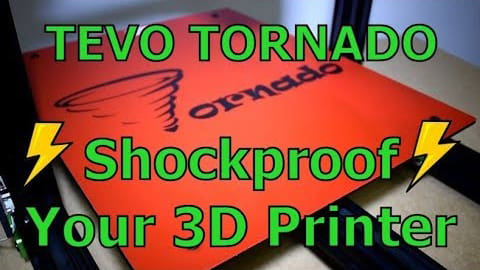
What is this Tevo Tornado upgrade? While the Tevo Tornado skirts around the common issue of other inexpensive 3D printer kits lacking a MOFSET (a part regulating power to the heated bed) with its own AC-powered bed, the manner in which it is wired up means that potentially, in time, exposed live wire could fall onto the frame and pose an electrical shock risk.
It’s not too sensational to think this will happen. The power cabling is soldered directly to the heated bed, with no strain relief taking the flex and load off of them as the bed travels back and forth as you print. Over time, the power cables have a much higher chance of working loose or snagging during the printer’s movements, and metal parts of the frame are a short drop from the print bed.
What do I need for this Tevo Tornado upgrade?
And, if your home lacks a differential ground breaker as part of its electrical setup:How to do this Tevo Tornado upgrade?
It is possible to ground the 3D printer with a little know how and the right tools. A clear and detailed video by Tevo printer tinkerer RuiRaptor covers the steps.
Glass Bed / Ultrabase
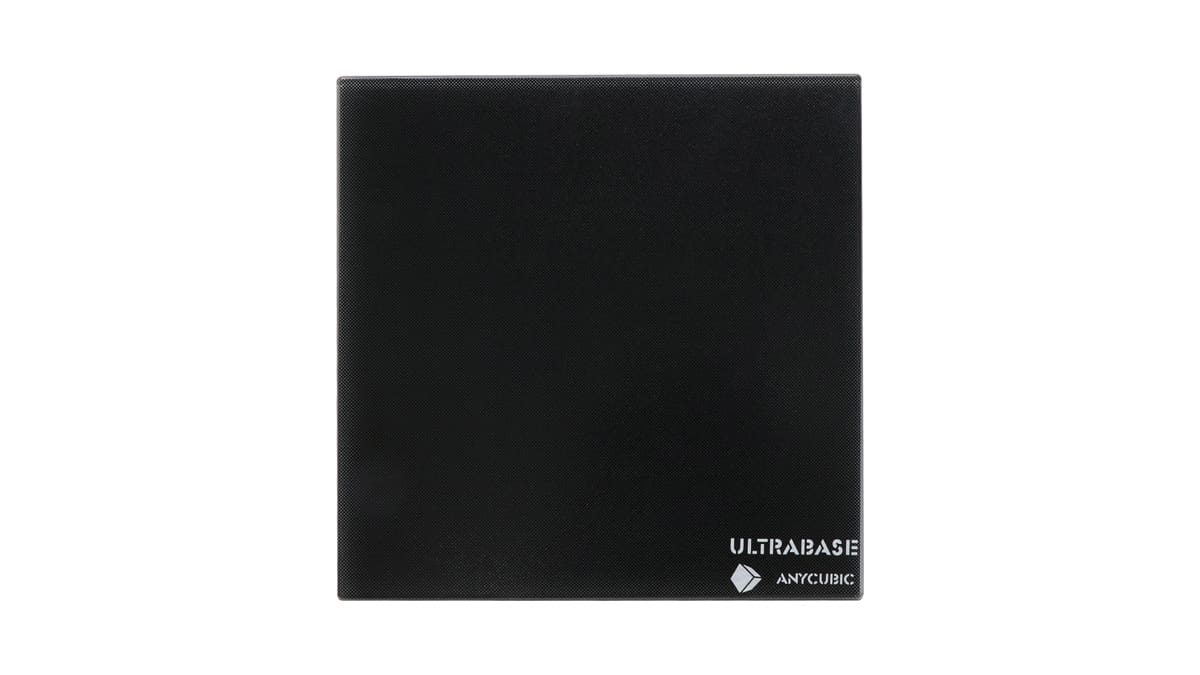
What is this Tevo Tornado upgrade? The stock Tevo Tornado print surface suffers from the same issue found with most other cheap kit printers’ stock beds. Grippy to a fault, you’ll likely find some prints stick so well that removing them risks damaging the printer. Or, at the very least, damaging the bed sticker itself.
This happens when the adhesive sticking the grip sheet to the heated bed itself gives way, creating bubbles under the surface and making it impossible to print perfect first layers across the print bed.
Adding a glass bed — a tried and true upgrade that gives great grip potential and the added flexibility of being able to remove the bed for print removal — is a solid step toward improving print bed adhesion.
Note: You need the 310×310 mm version of the Anycubic Ultrabase. And there are also cheaper 310×310 mm-sized glass beds available at Amazon, but we don’t know how good they are.
Smoothers
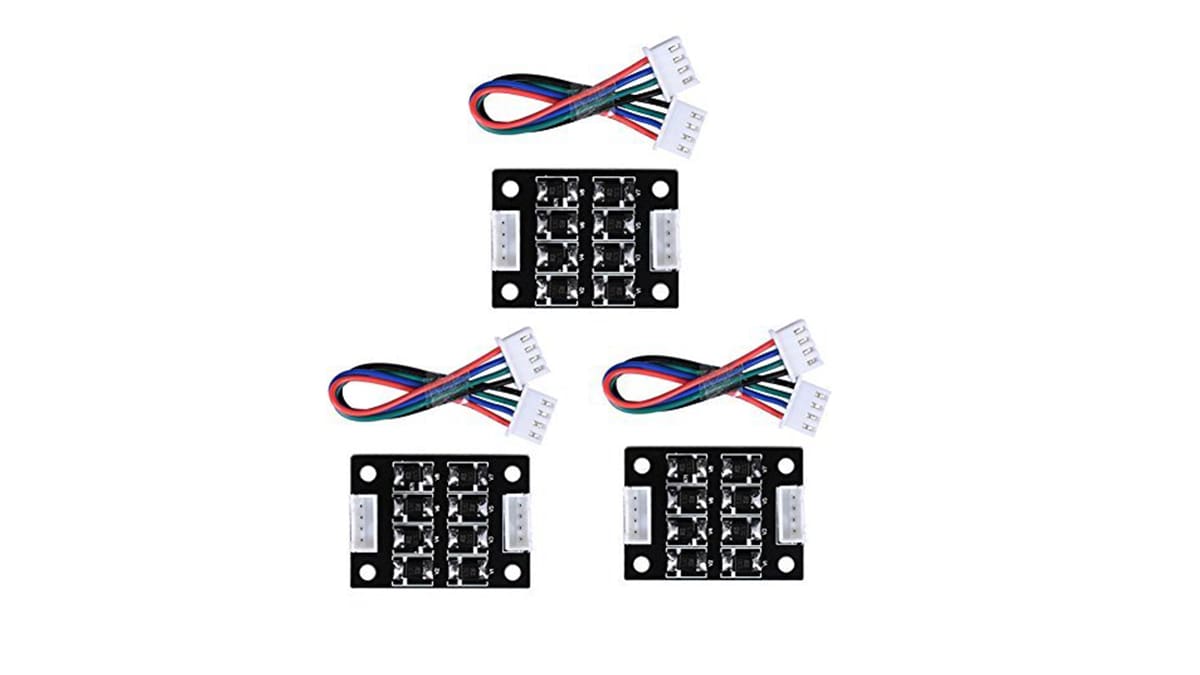
What is this Tevo Tornado upgrade? There have been user reports of prints from older models of Tevo Tornado suffering from surface artefacting commonly referred to as “salmon skin”.
Effectively an unwanted pattern across the outside of the print, it is caused by a discrepancy between the supply voltage and the printer’s motor voltage. The stock drivers for the stepper motors are not particularly effective at handling this, causing the motor to miss steps. Across the duration of a print this manifests as a noticeable pattern across the outside of the printed part.
There are two ways to go about handling this print issue — replacing the drivers themselves, or adding smoothers. Older Tevo Tornado 3D printers ship with the drivers fixed in place on the main board, so smoothers are the way to go. Newer models of the Tornado ship with drivers plugged in but not permanently fixed, meaning replacing the drivers is an option in addition to adding smoothers.
Since we imagine older Tornados are sitting in stock with many retailers still we’ll cover the broadest solution, which is smoothers. Inserted between the printer’s mainboard and its stepper motors, these teeny tiny boards smooth out the error.
Smoothers feature diodes — for this purpose, you’ll need to ensure you are using smoothers with 8 diodes.
To mount smoothers, you need to crack open the Tevo Tornado’s control box and plug them into the necessary connections. Simple.
Hot End
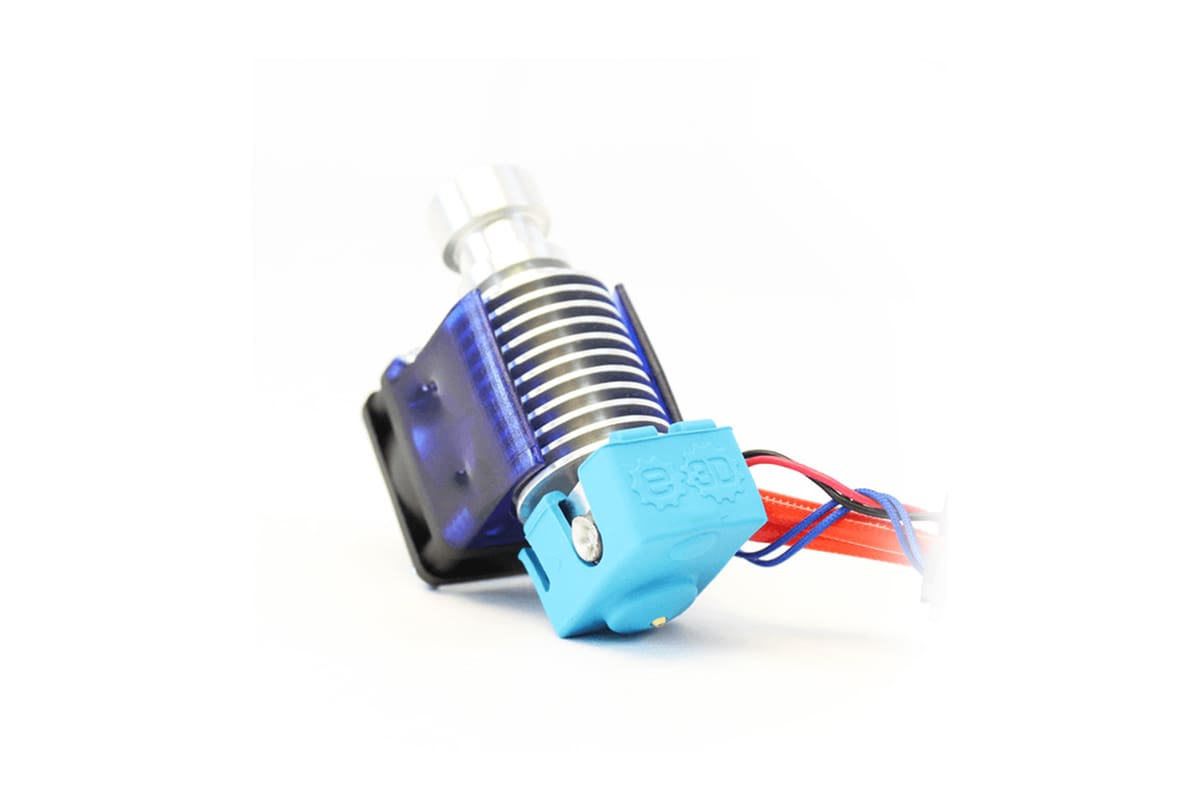
What is this Tevo Tarantula upgrade? The hot end that comes with the Tevo Tornado serves its purpose well. There’s likely nothing inherently wrong with it, but still, if upgrading and improving your printer is the aim, a high quality hot end will be a sound investment.
There are many to choose from, with some offering special characteristics like multiple-material extrusion. The go-to hot end to upgrade to is E3D’s V6. It’s high quality, open source and so widely used that there’s no shortage of 3D printable mount designs floating around the web.
Extruder
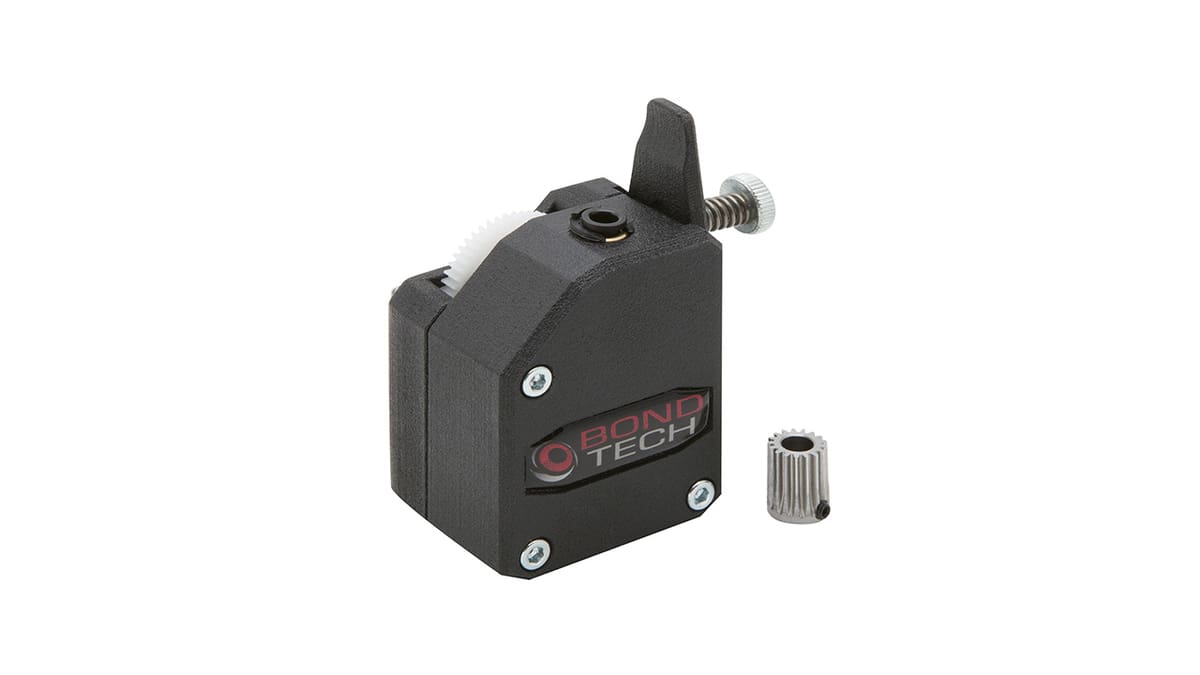
What is this Tevo Tornado upgrade? Like the hot end, another area to consider upgrading on the Tevo Tornado is the extruder. It already comes equipped with Tevo’s own take on E3D’s open source Titan extruder, but don’t expect it to match up to the exacting quality and longevity you’ll find with the real deal.
So there’s one option, to opt for E3D’s OG Titan extruder. It’s reliable, powerful and simple.
But those looking for the ultimate would be well advised to consider a Bondtech extruder upgrade for the Tevo Tornado. Utilizing two hobbed gears to grip the filament from two sides, his system delivers insane amounts of grip, resulting in the near-elimination of filament slips, grinding and other material-based errors of this kind.
Auto Bed-Leveling Sensor
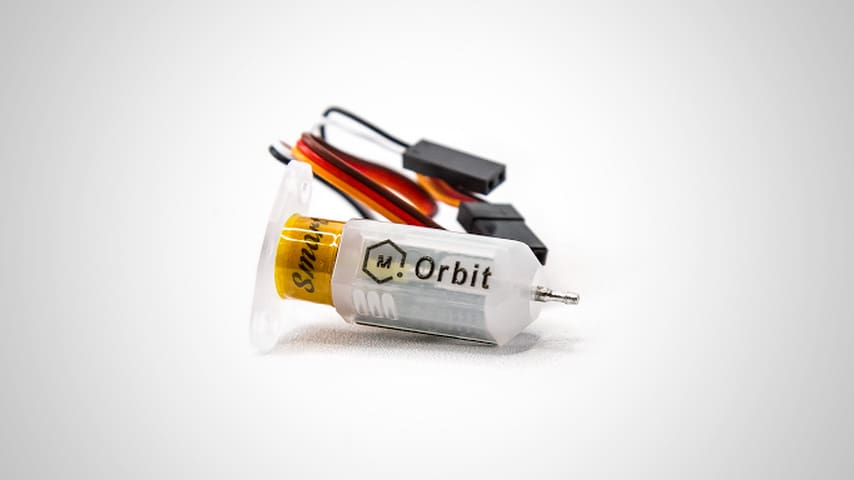
What is this Tevo Tornado upgrade? The Tevo Tornado’s print bed rides along in the Y-axis atop a single aluminum extrusion. With nothing supporting its extremes, it’s all too easy to unlevel the bed when removing a stubborn print.
Negating the need to manually fine-tune the level of your print bed, installing an auto bed-leveling sensor will do wonders for your quality of life when printing with an easily unleveled printer. There are a number of options (you can read up on them in our Tevo Tarantula upgrades guide).
We’ll focus on perhaps the simplest (and certainly the coolest looking), the BLTouch. Operating using a push-pin within a solenoid, this mechanical sensor probes the bed in a number of places to detect any tilt — relaying this information to the 3D printer to take it into account.
In addition to the BLTouch notifying you of its various statuses via bright LEDs, perhaps the best thing about it is it is material agnostic. Unlike inductive and conductive sensors, which can be thrown off by material changes and humidity, this little push-pin will work on anything with physical form.
You just need to keep in mind that you’ll need to re-wire your Tevo Tornado’s wires, activate the sensor in the printer’s firmware and 3D print a hot end mount to accommodate it.
Print Cooling Fan
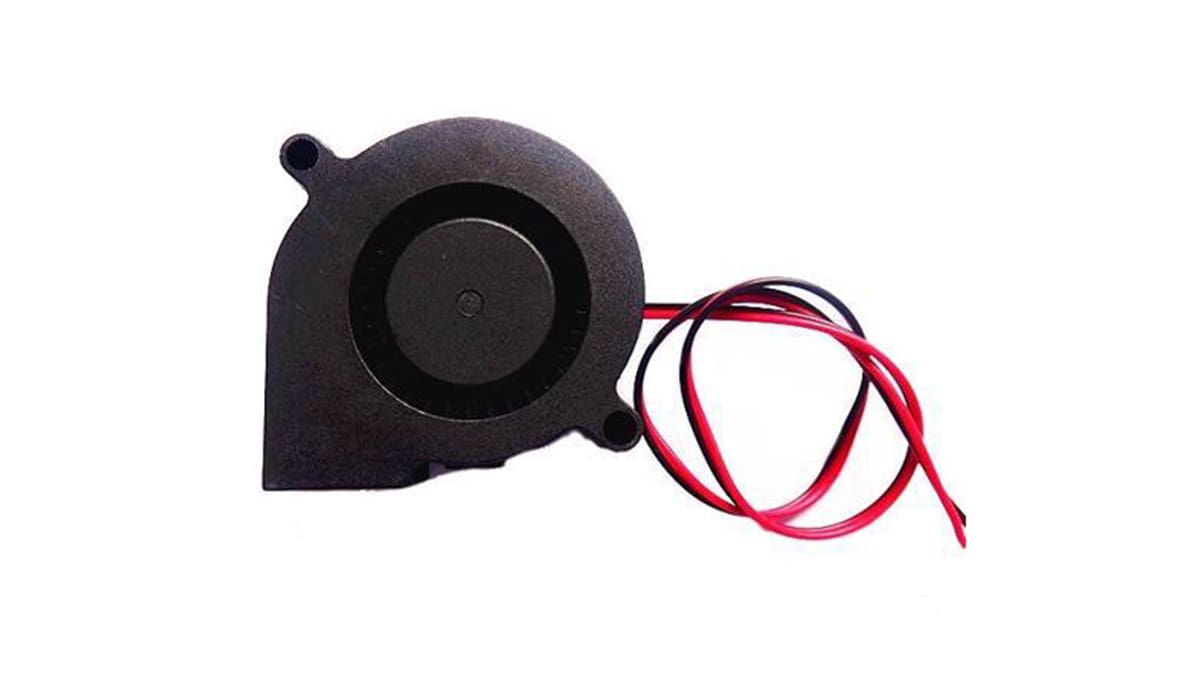
What is this Tevo Tornado upgrade? The stock print cooling fan on the Tevo Tornado is undoubtedly adequate for run of the mill printing with PLA, but when extensive bridging and temperature sensitive materials are required for the best performance, a competant fan and printed fan duct are a solid upgrade.
Radial blowers are known to give the best blow for your buck, but the question remains. One or two?
There are myriad downloadable designs upon the likes of Thingiverse to accommodate two radial blowers — we detail a couple of options down below in the Printables section of this guide.
One thing worth noting is that this particular printer powers its various electronic parts with 24V, meaning you’ll need to source 24V fans to get the best part cooling performance.
Raspberry Pi/Octoprint
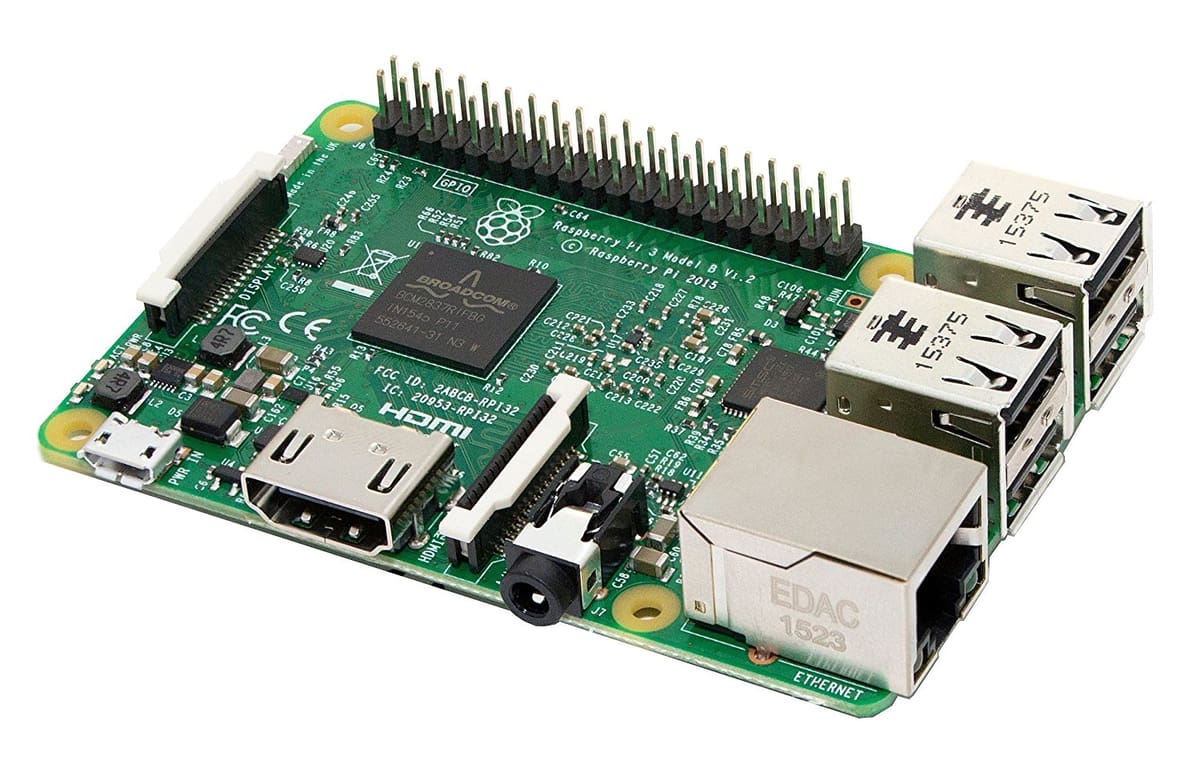
What is this Tevo Tornado upgrade? Braiiins. Adding a Raspberry Pi single-board computer loaded with Octoprint not only gives you wireless printing capability, but also means you monitor the printer’s status online, and take advantage of Octoprint’s advanced slicing engine (cutting down on the steps involved to go from STL to finished print).
If you want to keep things uncluttered, it’s perhaps best to print out a case for the Tornado that you can mount to the Tevo Tornado. We’ve got you covered with one listed below in the printables of this guide.
Bed Cable Strain Relief
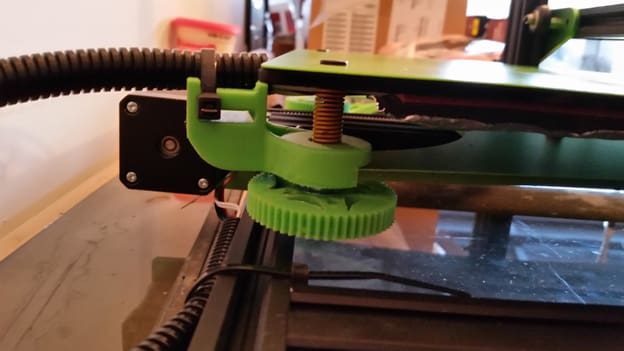
What is this Tevo Tornado upgrade? A simple and quick print that will go a some way to assuaging fears of electric shock related mishaps with this printer, a bed cable strain relief does just as its name suggests — relieving strain from the bed cables.
Mounted beneath the print surface on the corner of the bed where the bed power cables jut out, this printable supports the cables and protects them from constant bending motion when printing.
Who made this? lincolngkp
Get it: Thingiverse
Glass Bed/Ultrabase Clips
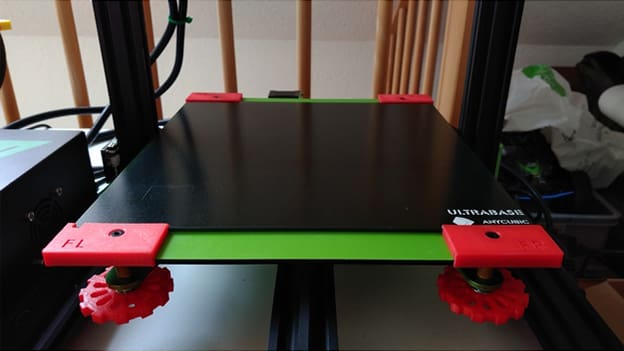
What is this Tevo Tornado upgrade? As we detailed above, a glass bed can make a big difference to your day to day 3D printing. And not just for first layer adhesion but also for maintaining bed leveling.
Unfortunately it’s not always so simple to get a glass sheet that fits the exact dimensions you require (in this case, 300 x 300mm). Handily, there are a number of clips and guides you can 3D print to make it dead simple to fit a smaller glass sheet (or named print bed alternative, such as Anycubic’s Ultrabase).
Simple in design, you may find this mod is best printed in a high temp resistant material like PETG, otherwise you may run into trouble with long exposures to the bed temperature affecting and deforming the clips.
If you plan to use Anycubic’s Ultrabase, check out SimonFrick‘s Ultrabase Upgrade.
Alternatively for a 300 x 300 x 300mm glass or mirror bed upgrade, this holder by Thingiverse user XapaPrime should do the trick, and boasts an integrated strain relief to boot. Some commenters note it doesn’t fit 12″ sheets the same, so this remix by wridley covers the imperially inclined.
Auto Bed-Leveling Mount
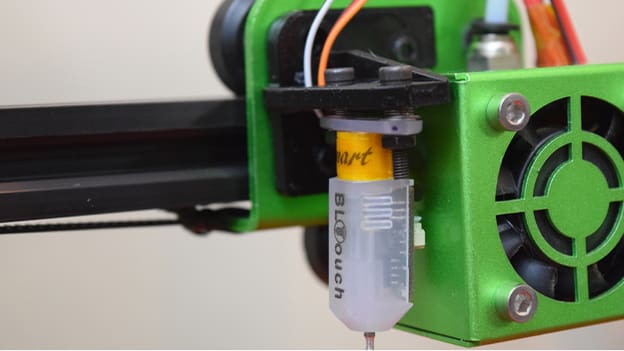
What is this Tevo Tornado upgrade? If you plan on sticking with the stock print head casing, then this little slip of a printable allows you to mount a BLTouch auto-leveling probe without the need to disassemble or completely re-build anything.
Designed by dfmsguitar and available on Thingiverse, pay special attention to the accompanying YouTube tutorial. Many commenters have encountered issues, so it’s perhaps best to follow along to the letter.
Who made this? dfmsguitar
Get it: Thingiverse
V6 Hot End Mount
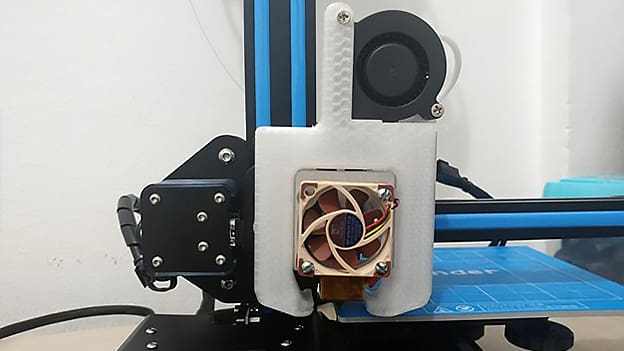
What is this Tevo Tornado upgrade? If a V6 style hot end upgrade is on the cards, then you will need some form of mounting piece to fit it to the Tornado’s X-axis carriage. Typically this will also involve a fan duct, as you relocate the print cooling fan.
The Petsfang V2 is one such solution posted on Thingiverse by user dpetsel. In addition to accommodating a V6 hot end, you get fan ducting precision designed to optimize fan airflow onto the extruding filament. Additional tweaks to this 3D printable piece allows for add-ons like the BLTouch.
The result is superior bridging and print cooling, in addition to hosting your V6 and, if you want one, BLTouch.
Who made this? dpetsel
Get it: Thingiverse
Filament Run-Out Detection
What is this Tevo Tornado upgrade? There are few things more soul destroying than setting a long print you know will be close to the wire with the remaining filament on the spool, only for it to run out just before print completion. A filament run-out sensor is a simple way to never suffer from the problem again.
Taking a spare end-stop switch (if you opted for a BLTouch, then you should have one going spare) and 3D printing a housing for it, you can create a simple and effective filament run-out sensor in no time. Maker dvilleneuve details the steps on the Thingiverse link below.
Who made this? dvilleneuve
Get it: Thingiverse
Bed Carriage Thumbscrews
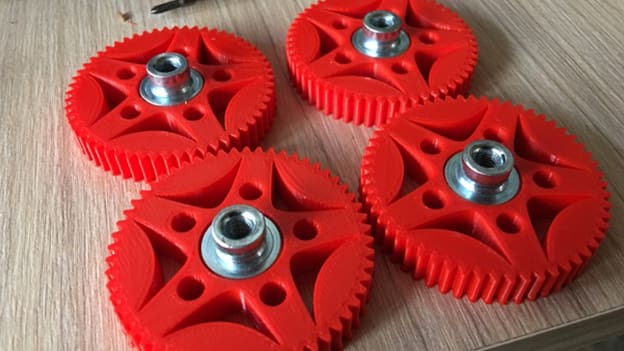
What is this Tevo Tornado upgrade? If you’re sticking with manual bed leveling for the foreseeable future, then consider adding oversized bed level thumbscrews. Quick and simple to print, these comedically large cogs give you a high level of control when leveling your bed by hand, fine tuning each corner to mere fractions of a turn.
Who made this? infectedfpv26
Get it: Thingiverse
Filament Holder
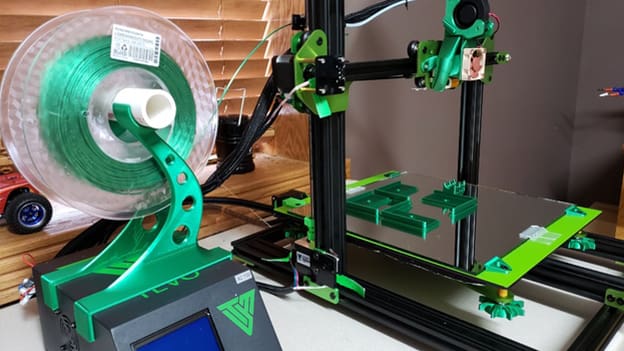
What is this Tevo Tornado upgrade? A frustratingly common issue with 3D printers is a lack of, or inclusion of a poorly designed filament spool holder. The Tevo Tornado is no exception, with no spool holder provided in the box.
The options to print one yourself are as numerous as they are simple. This design by Omster sits atop the Tevo Tornado control box, and requires a short length of PVC pipe to bridge the gap between the two printed arms.
Perhaps best of all for this design is that you can opt for a longer PVC pipe and have a holder that fits spools of all sizes.
Who made this? Omster
Get it: Thingiverse
Belt Tensioners
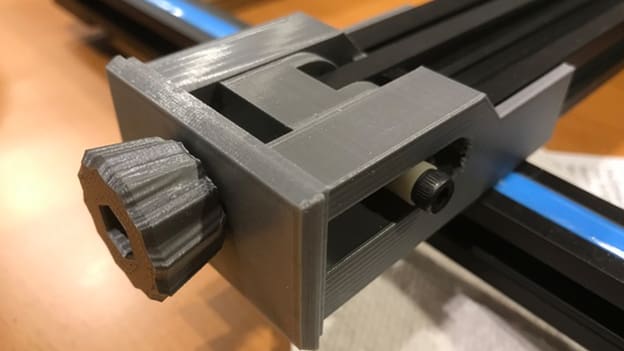
What is this Tevo Tornado upgrade? Many print problems can be attributed to simple mechanical issues. Loose nuts, loose belts.. the list goes on. Adding belt tensioners to the Tevo Tornado gives you a quick and easy way to tighten your belts just a tad, without having to take the machine apart every time it’s needed.
There are few belt tensioner designs dedicated solely to the Tevo Tornado, but since it uses the same style aluminum extrusion for its Y-axis rail as the Creality CR-10, one designed for the CR-10 should do the trick. This popular model by skartz is a simple print with a large and easy to use thumbscrew for adjustments.
Who made this? skartz
Get it: Thingiverse
Frame Brace
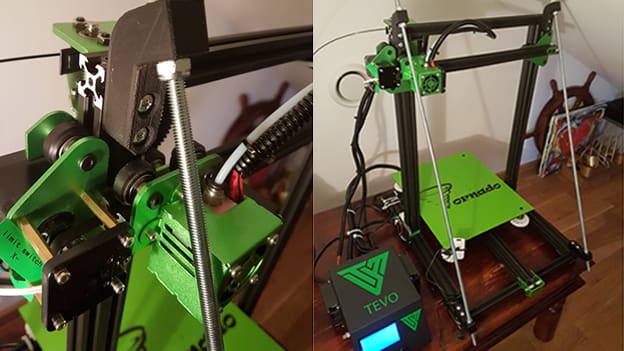
What is this Tevo Tornado upgrade? The trouble with these tall CR-10 style printers is the height, with long vertical aluminum extrusions supported solely at their base. Overtime these joints could come loose and introduce subtle wobble to your prints, especially ones that make use of the full height of the 400mm-tall print area. One remedy is to attach frame stiffeners such as these by c3n.
The four printed pieces attach to the Tevo Tornado’s frame, with a long M8 threaded rod secured between them.
Who made this? c3n
Get it: Thingiverse
Y-Axis Motor Brace
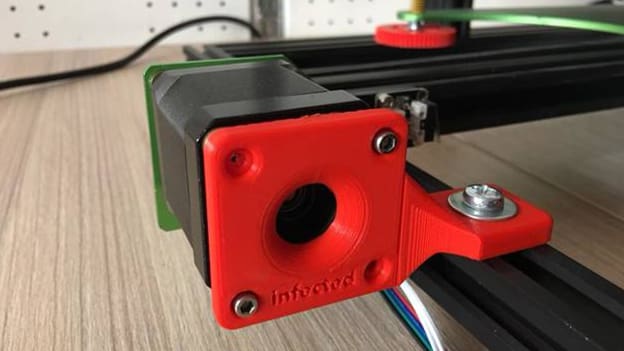
What is this Tevo Tornado upgrade? The design of the Y-axis motor mount on the Tevo Tornado leaves a little to be desired in terms of rigidity. With a well tightened belt, it’s possible in introduce a bending motion, which in turn could introduce slack and skew prints slightly. Either way, it’s an undesirable effect, and one easily fixed with a printable brace that fixes to the printer’s frame.
Who made this? infectedfpv26
Get it: Thingiverse
Raspberry Pi Case
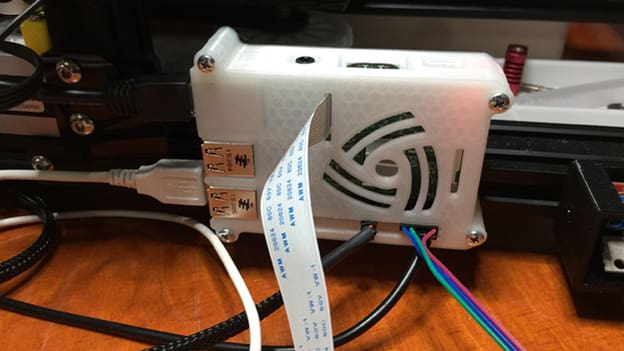
What is this Tevo Tornado upgrade? Mountable to the printer’s V-slot extrusion frame, this Raspberry Pi case cuts a slim figure, tidying the lil Pi out of sight and providing all the necessary access to ports and GPIO pins.
Who made this? FreakErn
Get it: Thingiverse
Did we miss anything? Let us know in the comments below, and we’ll consider it for future updates!
License: The text of "19 Must-Have Tevo Tornado Upgrades and Mods" by All3DP is licensed under a Creative Commons Attribution 4.0 International License.
CERTAIN CONTENT THAT APPEARS ON THIS SITE COMES FROM AMAZON. THIS CONTENT IS PROVIDED ‘AS IS’ AND IS SUBJECT TO CHANGE OR REMOVAL AT ANY TIME.
